FS Colour Series: Dress Blue inspired by Anthony van Dyck’s Decadent Darkness
Dark and decadent, the midnight tone of DRESS BLUE Linen envelops characters in Antony van Dyck’s stirring portraits, enveloping them in a brooding, dramatic aura. Master of the Flemish Baroque, van Dyck was the most successful portrait painter of his day, most notably for King Charles I of England, but he also painted a wide range of narrative subjects, capturing the natural fall of light across various textures including fabric, hair and skin with dazzling levels of realism. Stark, chiaroscuro contrasts of light and dark define his theatrical style, while deep, midnight blue is the ideal backdrop for investing sitters with pervading mystery and intrigue.
The artist was born under the Flemish name Antoon van Dyck in 1599 in Antwerp. His wealthy father was a silk merchant, giving him a prosperous start in life. Precociously talented, Van Dyck became an apprentice to artist Hendrick van Balen in 1609 aged just 10 years old, before becoming the chief assistant to Peter Paul Rubens from 1617-20. Known for his arrogance and striking good looks, Van Dyck established an independent career in his early 20s, focussing on portraits of aristocratic society.
The immaculately dressed sitter for Portrait of a Lady, 1620 is drenched in shadowy blue darkness, while gold embroidery on her chest gently ripples in the light. Emerging like a beam of sunlight, a stiff, starched collar surrounds her pale, earnest face, investing in it an angelic innocence. Van Dyck spent a year working in London for King James I, but left in 1921 to travel throughout Italy, taking on various commissioned portraits of nobility along the way and picking up influences from the lyrical, narrative language of Titian. By 1828, he had returned to Antwerp, where his oeuvre expanded to include emotionally expressive religious scenes.
In 1632, Van Dyck returned to London, where he remained for the rest of his life, becoming the esteemed court painter to King Charles I. The portraits he made of the King, his family and aristocratic members of the royal court earned him an international reputation that eventually led to his knighthood, while the lavish detail and sumptuous fabrics of his portraits inspired artists for generations to come. Portrait of Nicholas Lanier, 1632, captures the esteemed composer and Master of the Music of Prince Charles in an outdoor setting, surrounded by softy flickering light. Into an otherwise muted colour scheme, a dramatic swathe of navy fabric falls across his chest, crumpling and folding into pockets of velvety black darkness. This tone mirrors the dark blue of the composer’s eyes, drawing us towards his penetrating and contemplative stare.
In contrast, the unknown sitter for Portrait of a Woman with a Rose, 1635-9 is shrouded by almost black darkness. Her rumpled, silky dress in rich navy glints in the foreground light, encompassing and consuming her body with weighty, voluminous puffs and creases. In contrast, her dazzlingly pale face and hands emerge from this rich cave of darkness with an earnest, youthful brilliance, while her lips, eyes and pearls glisten with crystalline white light.
Van Dyck was also known for creating a remarkable series of self-portraits that capture the dashing charm that made him world famous. In Self Portrait, 1641, he portrays himself leaning with a relaxed, nonchalant air of confidence to one side, while his jacket and shirt are lightly undone. As with many of his portraits, he wears clothing in the deepest shade of navy, lending him an aristocratic air of grandeur, while providing a cool, watery counterpoint to the glowing, brown warmth of his face, eyes and hair. In the background, midnight has also fallen across the night sky, as moonlight weaves thin, almost invisible threads of white across a mesmerizingly deep, entrancing shade of dark blue.





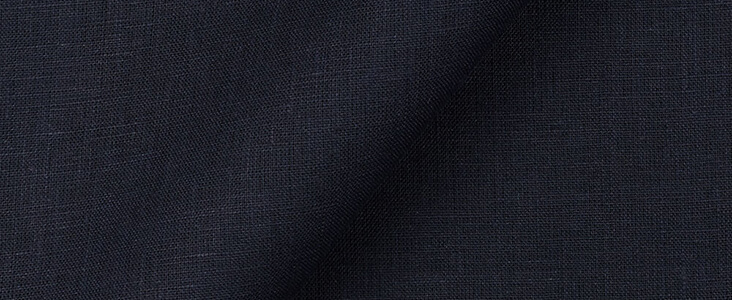

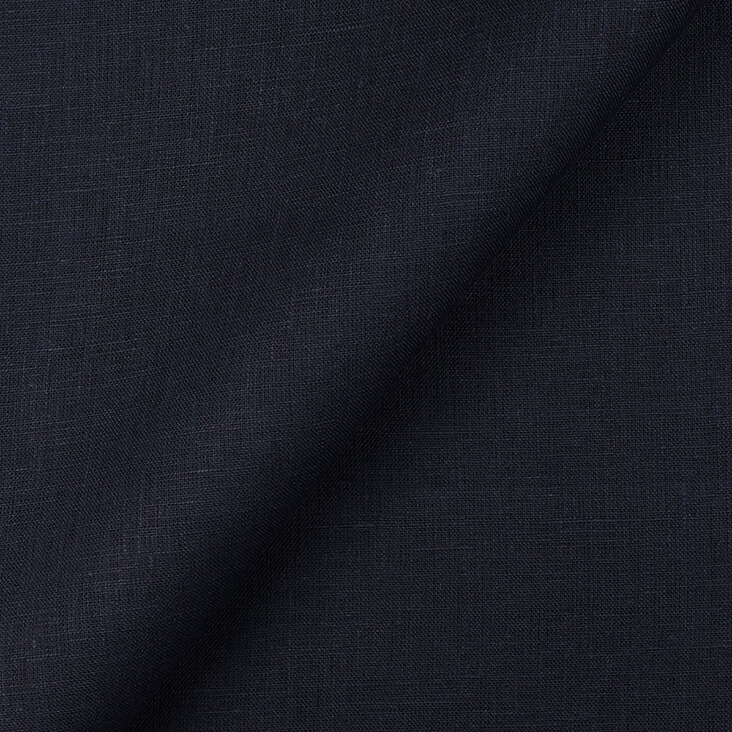
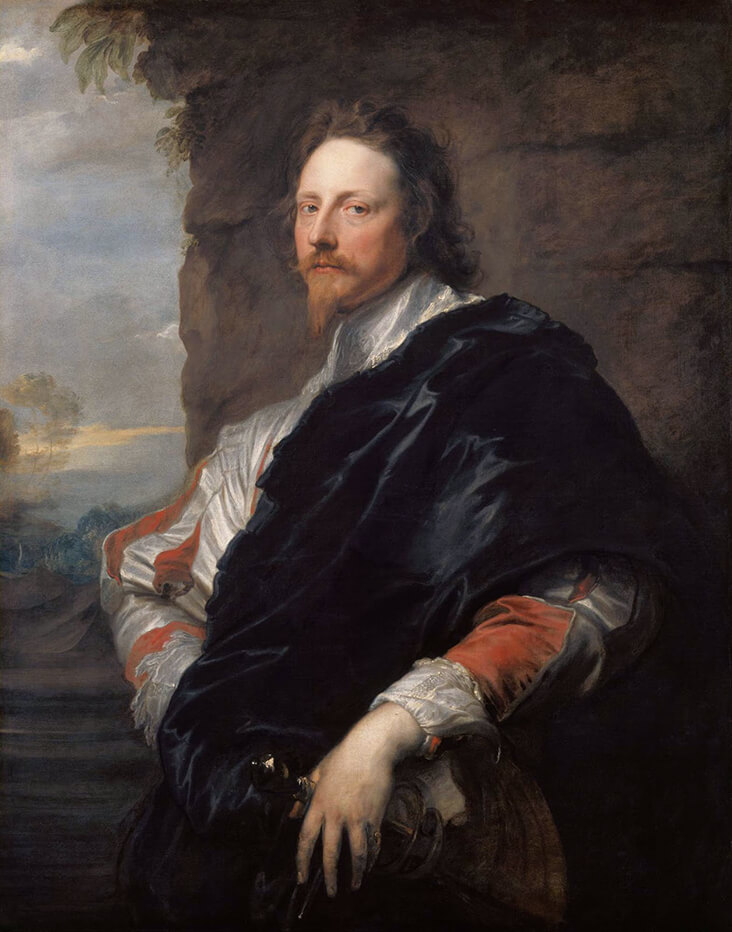
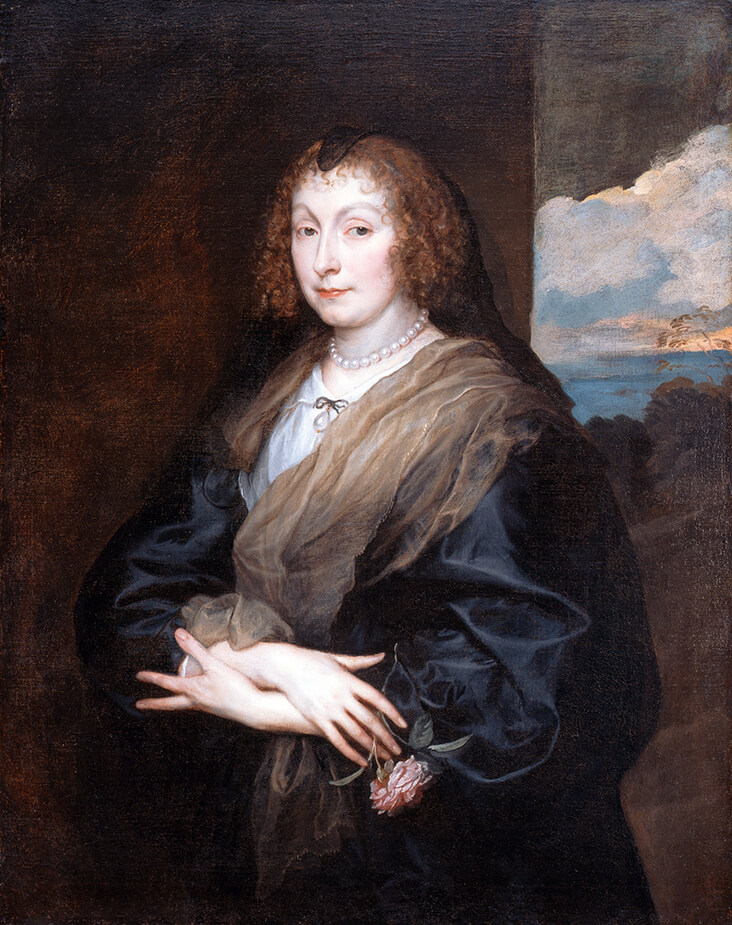
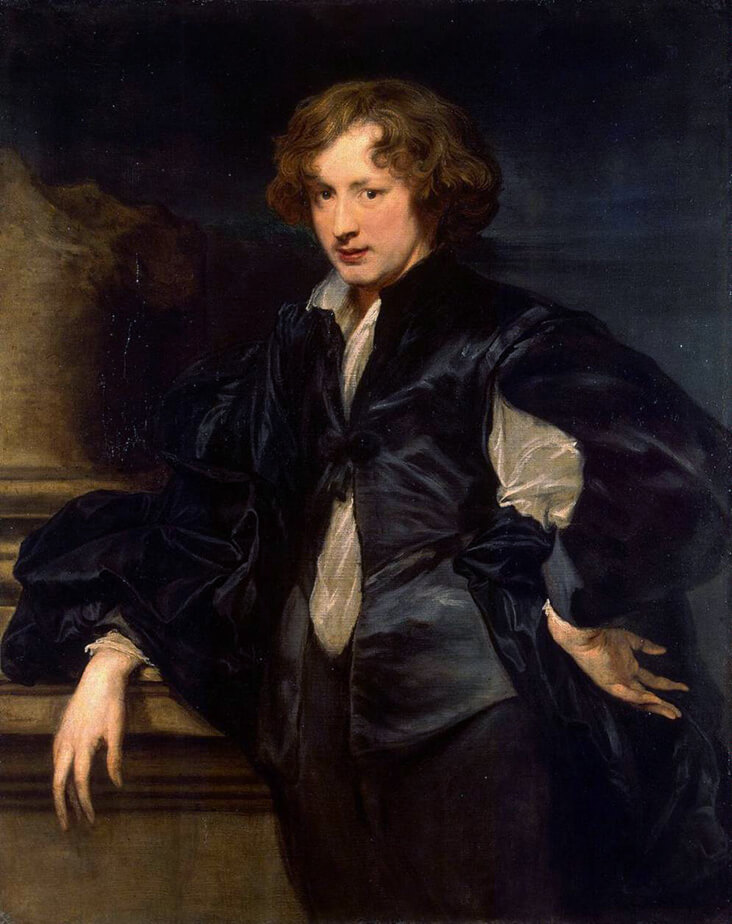


















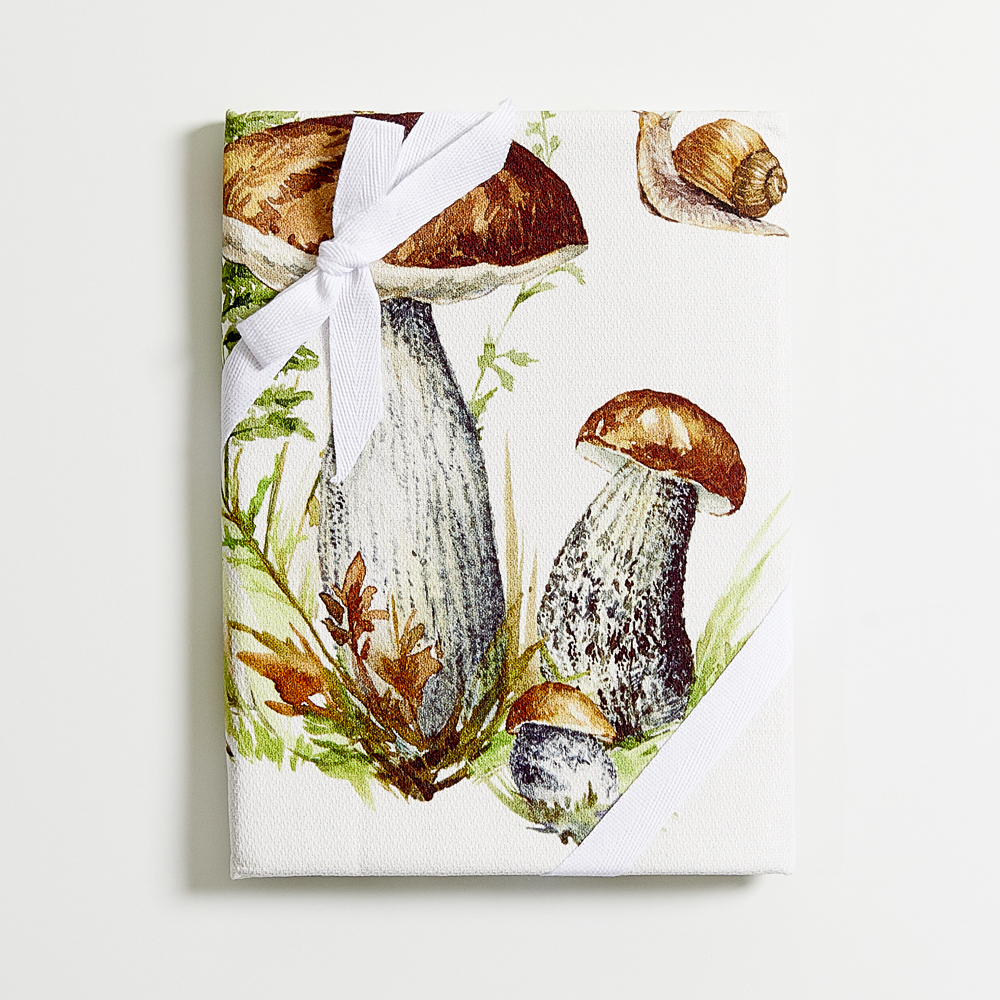










2 Comments
Vicki Lang
The dark blue of the clothing gives Antony van Dyck paintings a luxury quality. The blue reminds me of today’s business suits with its rich color.
Rosie Lesso
Absolutely! It’s such a rich, dense colour – perfect for power dressing…